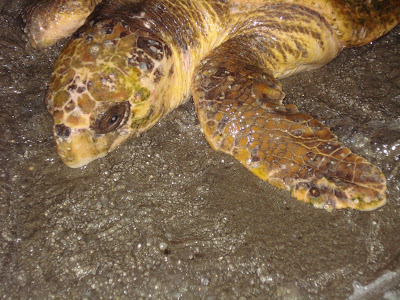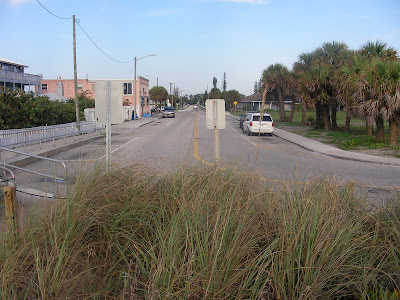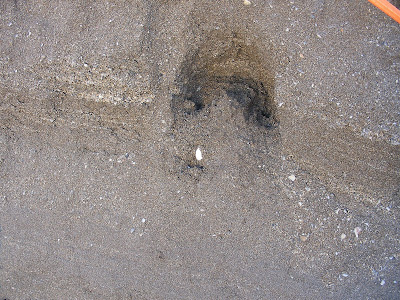Your photos for the week can be found on the front page of the Sunday (6/21/09) Father's Day edition of the "St. Lucie News Tribune". It shows two of the EA Inc. researchers, scientist Ernesto Calix and senior scientist/sea turtle biologist Niki Desjardin, counting the hatched and unhatched leatherback sea turtle eggs from a recent leatherback nest hatch. It was probably one of the Leatherback nests further down the beach from "our" section of the beach, but the three Leatherback nests within our section should be about ready to hatch, as well. The one scientist, "Niki", that is shown in the photo in the newspaper is the same Niki (with the correct spelling of her name this time, however) that we spoke to and logged in our blog a while back. These two scientists are checking some of these nests for their research. There is also some very detailed sea turtle nest information and statistics in the remainder of the article (page A4) that covers 5 counties along the east coast (Martin, St. Lucie, Indian River, Brevard & Palm Beach). Those 5 counties account for about 58,703 sea turtle nests (about 82%) of the 71,412 sea turtle nests found on all beaches in the state of Florida to date. The statistics also reflect an earlier "guesstimate" of ours in an earlier blog where we guessed that the vast majority of nests that we would find on our stretch of beach would be Loggerheads. The article reported that the number of Loggerhead nests found in the 5 county area ( 49,553) represent about 81% of all of the nests found to date in Florida (61,457). In a similar vein, Green turtle nests for the 5 county area number 8458, or almost 92% of the 9,228 green turtle nest total for the state. The statistics for the Leatherbacks show that our 5 county area had 692 (95%) of the state total of 727. Obviously, these statistics may change during the course of the turtle nest laying season (March - October), but our guess would be that the current statistics will accurately reflect the final percentages. Our own humble statistics show 24 total nests for our section of the beach, including 21 Loggerhead nests (88%), 3 Leatherback nests (12%) and no Green nests (0%). Not exactly in line with the 5 county area stats, but it's a start! Our thanks to the "St. Lucie News Tribune" for such an excellent and detailed article about sea turtle nests on our beaches. It was very informative an perfect timing for our Turtle Dads Father's Day celebration!
 . The last one to hatch, by or records, was TC731 - a Loggerhead nest laid on July 31, 2009. It started to "hatch" on September 21. For comparison, we had 83 nests total during the 2008 nesting season, with 23 destroyed by storms and only 50 hatching. As a result, even though we started out the season with 32 fewer nests (51 vs. 83), only 9 fewer nests (41) actually survived to hatch this year than was the number that hatched last year (50).
. The last one to hatch, by or records, was TC731 - a Loggerhead nest laid on July 31, 2009. It started to "hatch" on September 21. For comparison, we had 83 nests total during the 2008 nesting season, with 23 destroyed by storms and only 50 hatching. As a result, even though we started out the season with 32 fewer nests (51 vs. 83), only 9 fewer nests (41) actually survived to hatch this year than was the number that hatched last year (50).

.JPG)
.JPG)


.JPG)
.JPG)











.JPG)



.JPG)

























